Behind the scenes at Sonus Faber: homegrown hi-fi at its most artisanal
An inside look at the high-end Italian speaker brand's uniquely domestic production
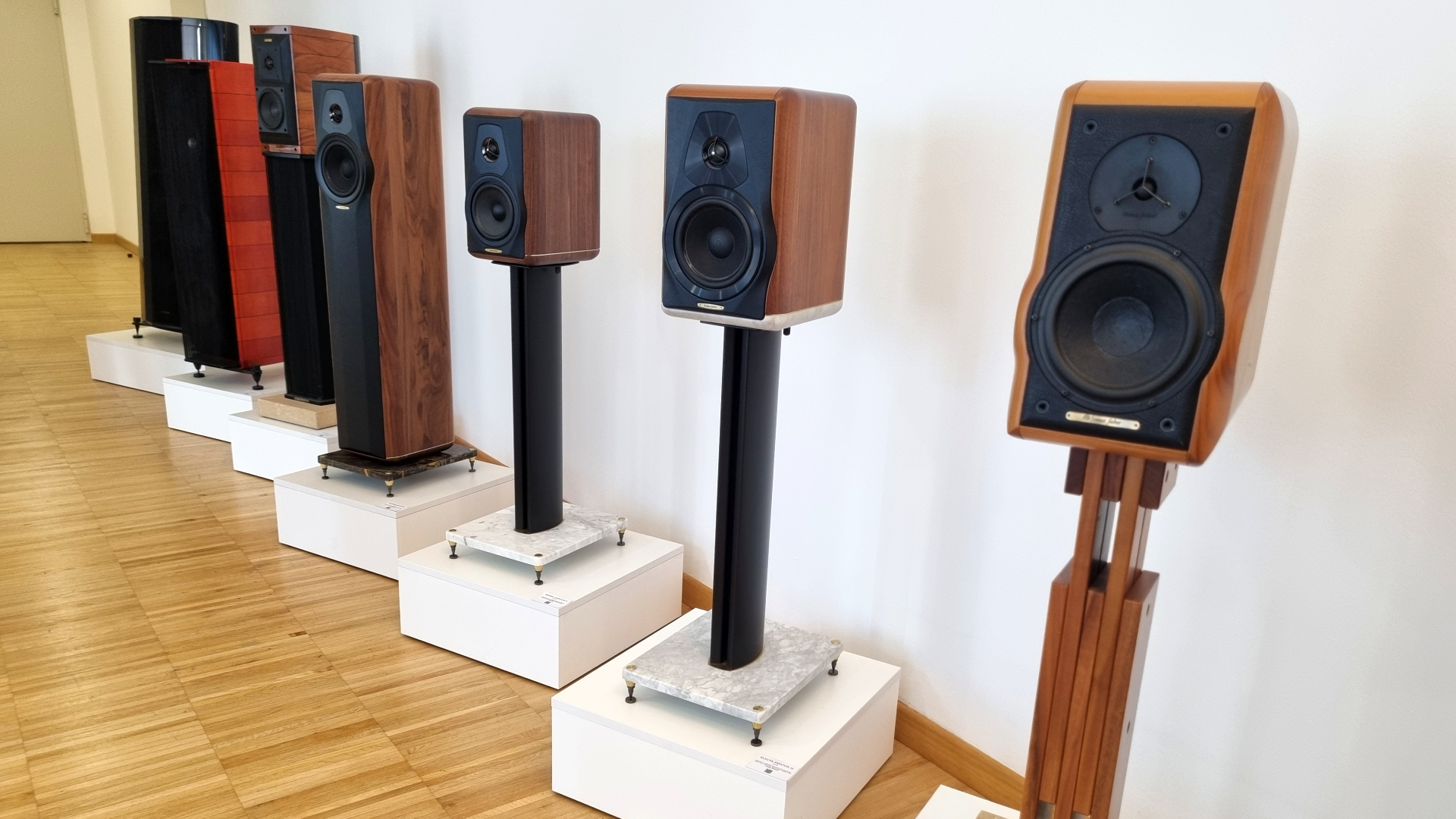
Hi-fi manufacturers will be quick to tell you of their passion for music – that’s fundamentally the basis of their (and our) admiration for hi-fi, after all. And it’s easy to believe such sentiments from Sonus Faber when, upon arriving at the Italian company’s headquarters in Arcugnano, Vicenza, we’re faced with a building whose roof mimics the curvature of a violin. It’s a fitting ode to an instrument that has played an instrumental role in the brand’s four-decade history of speaker production.
It was 10 years after its inception that Sonus Faber created its first high-end speakers with wooden, lute-shaped cabinets. The 1993 Guarneri Homage standmounter was the debutant for an ‘Homage’ collection (named after the most distinguished families of Cremonese violin makers in the 16th, 17th and 18th centuries – Guarneri, Amati and Stradivari), which still boasts some of the finest speakers in the firm’s catalogue today. And it would mark the start of a long and prosperous journey into artisanal speaker manufacturing.
The building we stand in as we are guided through Sonus Faber’s early history and examples of its first speakers is the one the company moved to from nearby Monteviale in 2003 – and was defined by its local architect as “a place for music”. It’s not just a museum and office headquarters; it’s a working factory where every Sonus Faber speaker – from entry-level Lumina to flagship Reference – is assembled and, in the building opposite, designed.
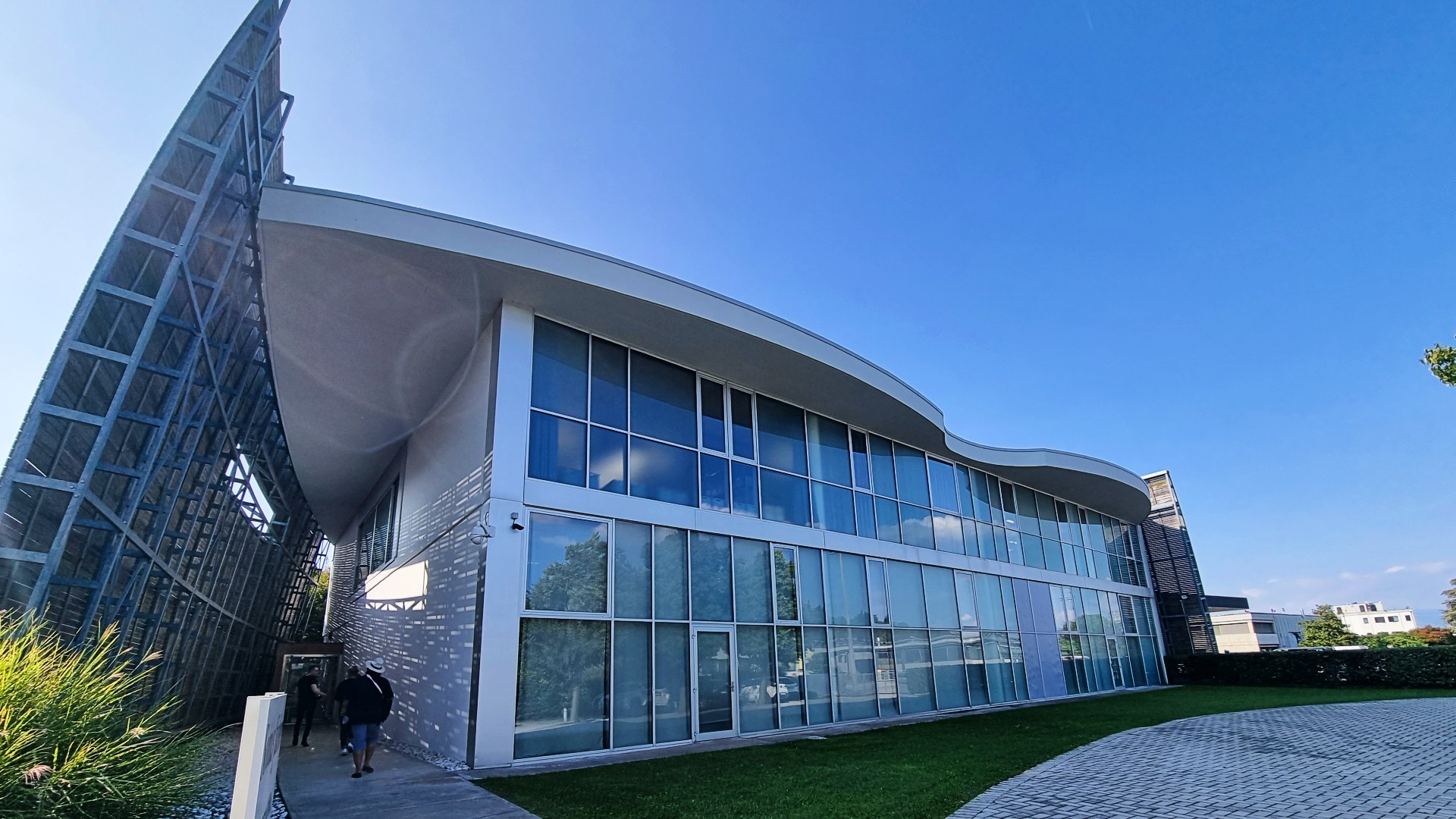
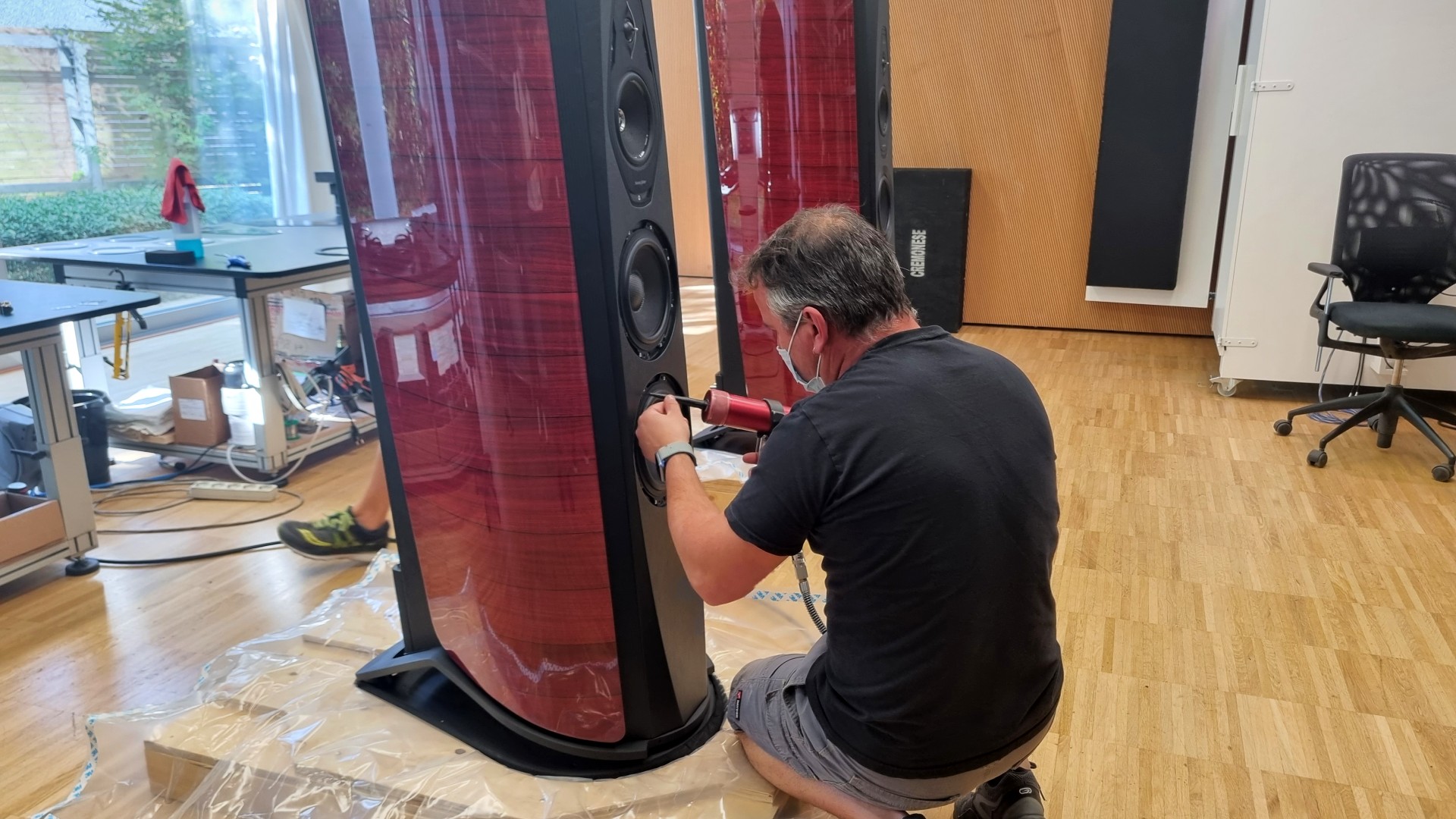
With elements of hi-fi speaker production increasingly moving to China (something Sonus Faber has exercised for the manufacturer of its Lumina cabinets), Sonus Faber prides itself on local craftsmanship from local suppliers. The cabinets for the rest of its ranges are manufactured by a wood-maker roughly 30km from Vicenza called De Santi.
As the story goes, Sonus Faber founder Franco Serblin was looking for a new approach to hi-fi in the mid-‘80s and, settling on solid wood as his discriminator, discovered Luciano DeSanti’s factory, which at the time specialized in grandfather clocks. Fast forward nearly forty years and that same company and factory, now run by Luciano’s son Stefano, is still the maker of (almost) every Sonus Faber cabinet – and this has become their main business.
Their partnership has grown into a collaborative one over the years, too. “They're the experts too,” says Sonus Faber’s Marta Vecellio as we tiptoe around the factory floor. And there’s one particularly good anecdotal example of this that sticks with us.
Having made walnut wood standmounters with the Parva (the first-ever Sonus Faber speaker), Minima, Electa and Electa Amator models, Serblin wanted to create a floorstander version. (It wasn’t until 1998, 15 years into the company’s existence, that Sonus Faber’s first floorstander – and first three-way speaker – was actually born in the Amati Homage.) However, this wasn’t possible at the time due to limited wood-drying methods for larger walnut panels, as required for a floorstander – if they couldn’t be dried well enough, they would risk cracking under intense use. But De Santi was able to help Sonus Faber finally fulfil this early ambition. First, the American walnut wood loses resins and humidity by drying naturally, before entering a very dry chamber that gradually heats up and is then turned up to a high temperature at the end. A change from a silicon glue to a softer water-based one has helped too. And thus, Maxima Amator was born in 2020.
Get the What Hi-Fi? Newsletter
The latest hi-fi, home cinema and tech news, reviews, buying advice and deals, direct to your inbox.
The speakers, which have cabinets finished in a glossy lacquer (the Homage and Reference models), are then sent to a tiny nearby lacquering factory, which also treats Steinway pianos, to be cured for one month, sanded and then repeatedly polished over seven stages, before being sent back to the Sonus Faber HQ for assembly. Again, this is a relationship that goes way back, beginning around 1993 when Sonus Faber realised it needed a human hand’s touch to treat its beautifully curvaceous but awkward to handle Guarneri Homage speakers.
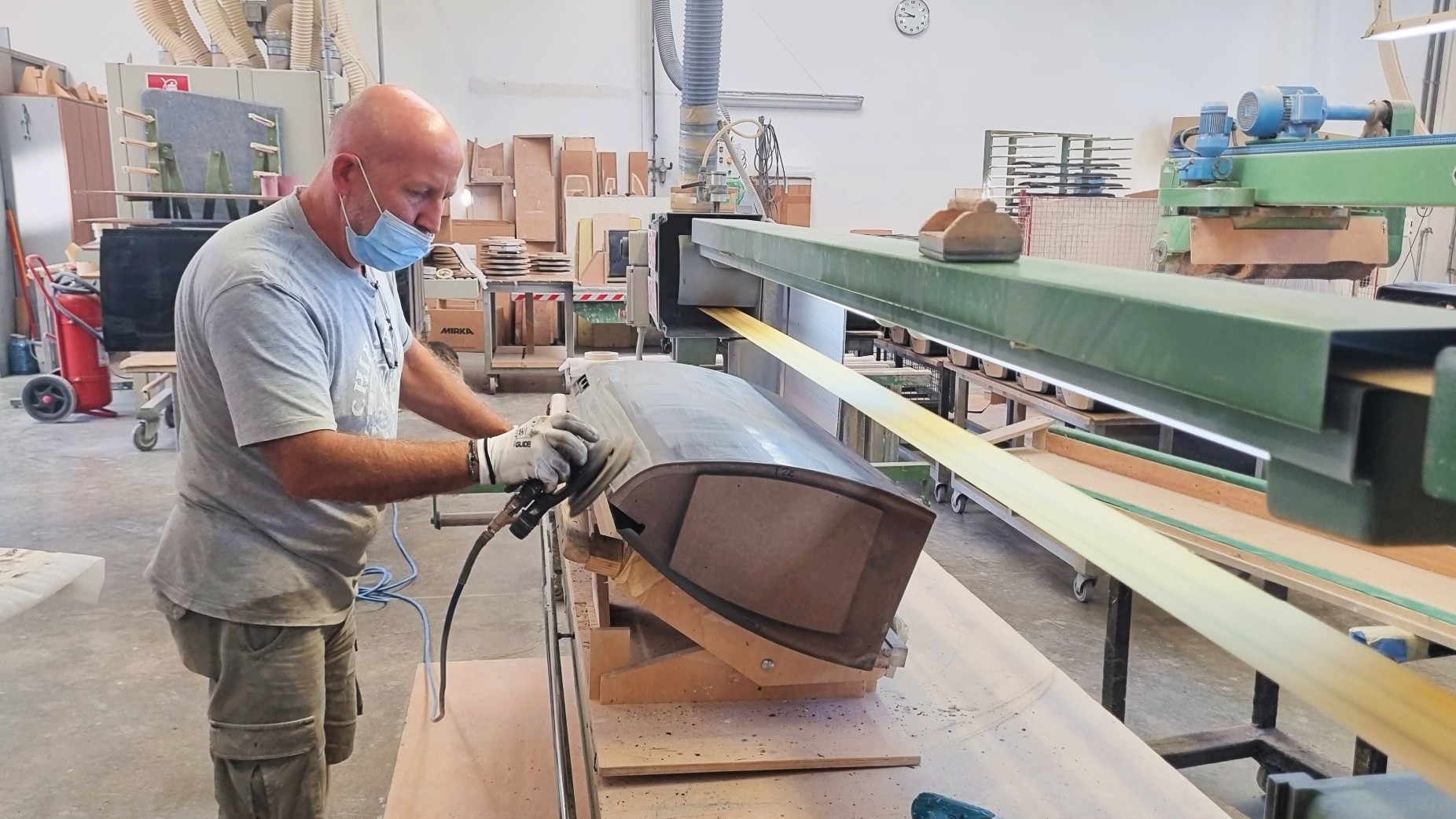
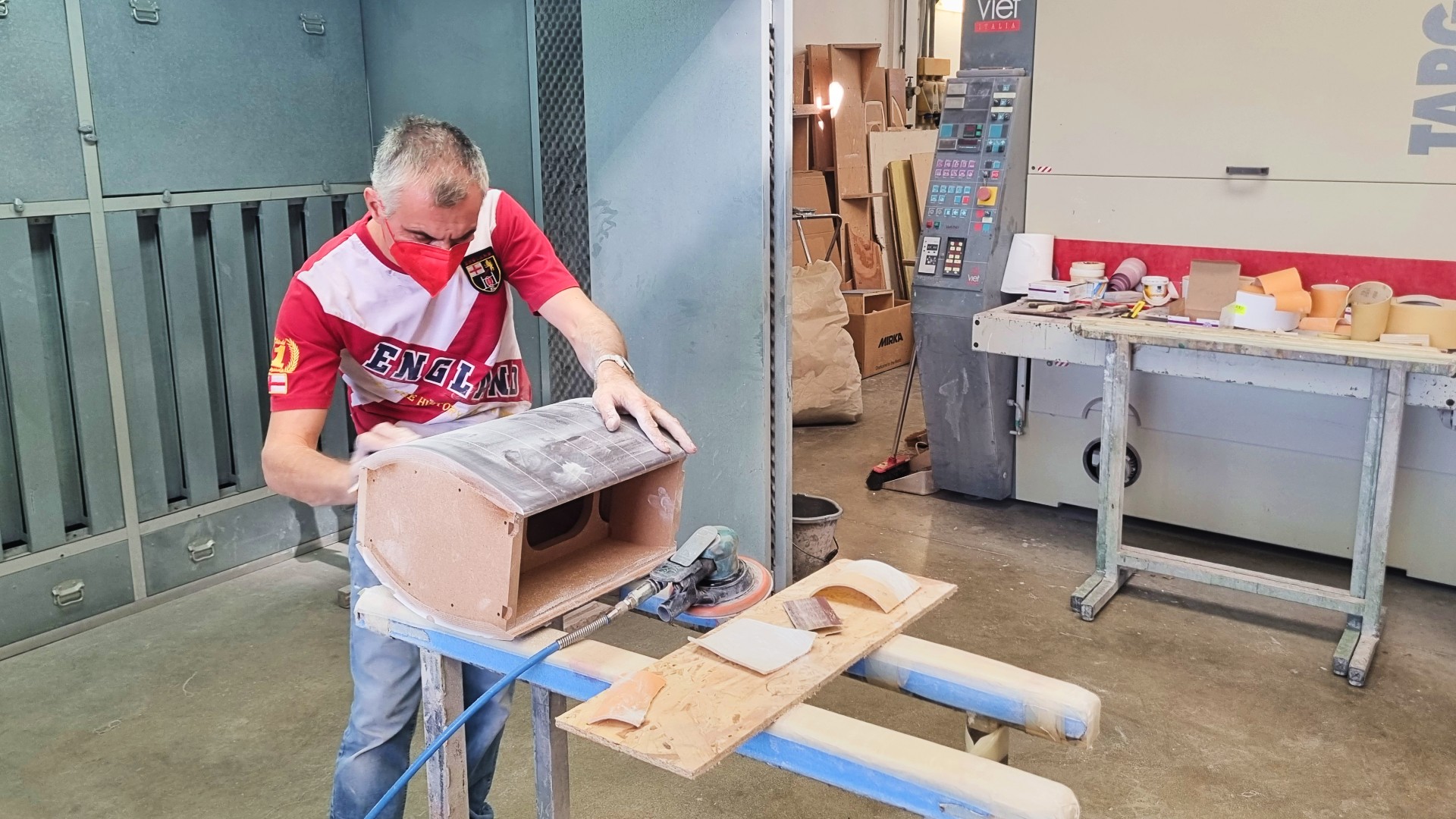
Before we can confidently say “bellissima” in a passable Italian accent, we find ourselves having gone full circle in a Sonus Faber speaker’s production journey. Sonus Faber might have stuck predominantly to wood cabinets and paper cones for most of its history, but it has experimented and innovated in those areas.
The company has dabbled with headphones (the Pryma 0|1 in 2015), a wireless music system (the SF16 in 2016), custom install speakers (the Palladio collection in 2019), and cars, with the system for the Maserati SC20 supercar, which we sadly didn’t spy in the car park.
The Design Lab, which is opposite the headquarters and which used to be a production facility for Electa, was opened in 2014 and is the starting point for every Sonus Faber product. It’s here, in this chamber of secrets, where the acoustic designs, computer simulations and prototype components come together; where prototypes’ mid-to-high frequency responses are measured and exercised to their limit in an anechoic chamber; and where the team listens and compares them to products from competitors in order to determine areas for refinement.
It’s all very necessarily mechanical but the headquarters and Design Lab accommodate more laissez-faire (or should we say ‘spensierato’) listening too. Each building is fitted with a listening room that represents the McIntosh Group parent company, which Sonus Faber has belonged to since 2016.
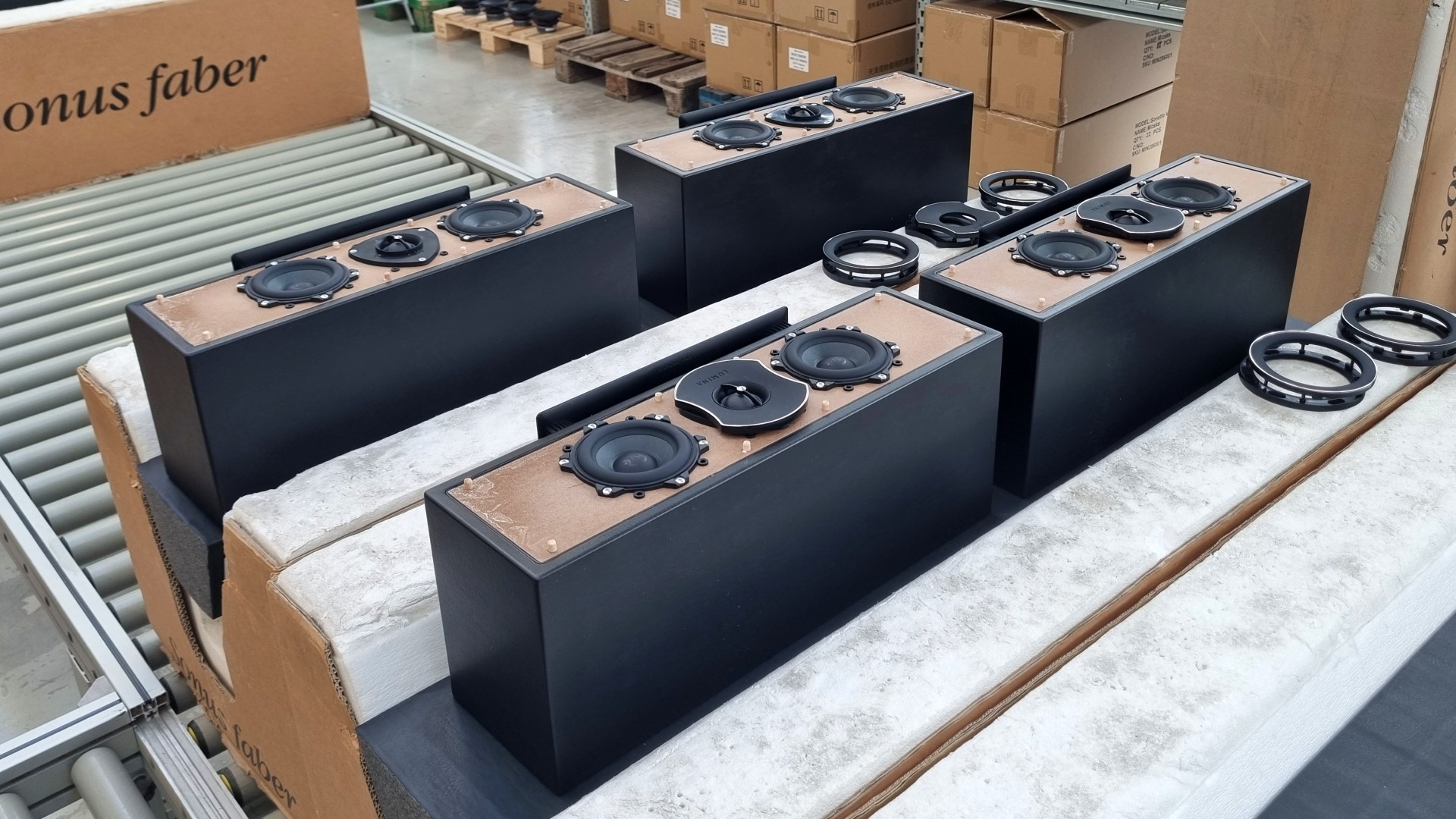
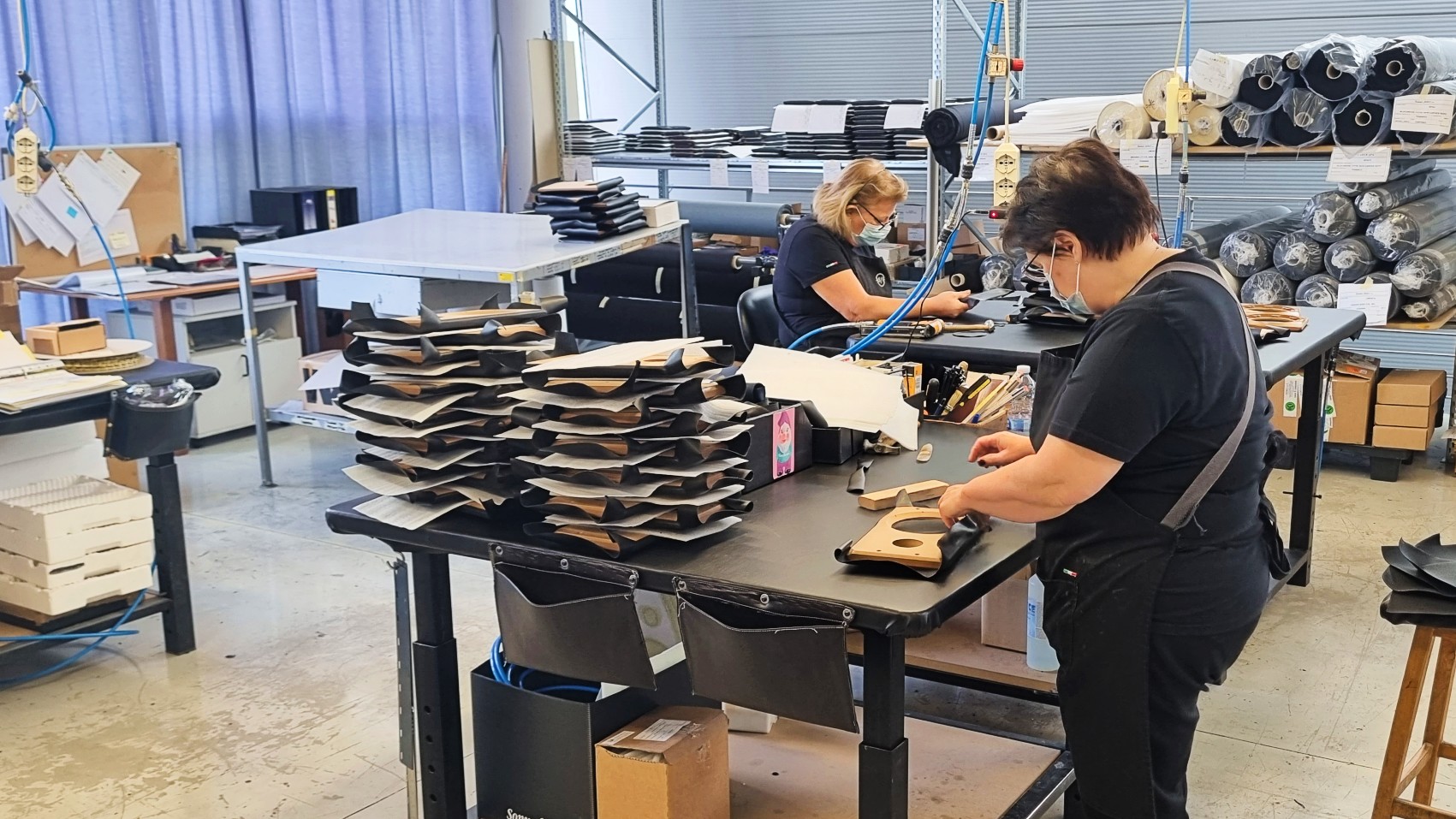
As well as a blast of Dolby Atmos action through its AV room’s 9.6.4 configuration of Sonus Faber Palladio CI speakers driven by McIntosh muscle, we were treated to a two-channel demonstration – first of the new Lumina V floorstanders (the firm’s latest speakers) fed by a Lumin U1 streamer, McIntosh D1100 (DAC stage only) and Rotel RA1592 integrated amplifier, and then of the new Maxima Amator with the Rotel amplification swapped out for the heavyweight combination of McIntosh’s C2700 tube preamp and MC462 power amp. Do the maths and we’re talking systems just shy of £20,000 (around $27,000, AU$37,000) and £43,000 ($58,000, AU$80,000) respectively.
It has been less than two years since the Electa Amator III glided into our test rooms, and even less time since we had our first taste of the Lumina series through the Lumina 1 standmounts.
The Lumina V are unsurprisingly recognisable – bold-sounding and solid, with a low-end authority from those twin 6.5-inch woofers lapping up Leonard Cohen’s guttural, front-and-centre vocal in You Want It Darker and suitably anchoring the bassline that bubbles below it.
There’s enough scale and space for Saint-Saëns’s Danse Macabre (performed by the Symphony Orchestra of London) to hold interest, and a sense of midrange purity and expression to help you instantly appreciate Eva Cassidy’s delivery in household favourite What A Wonderful World.
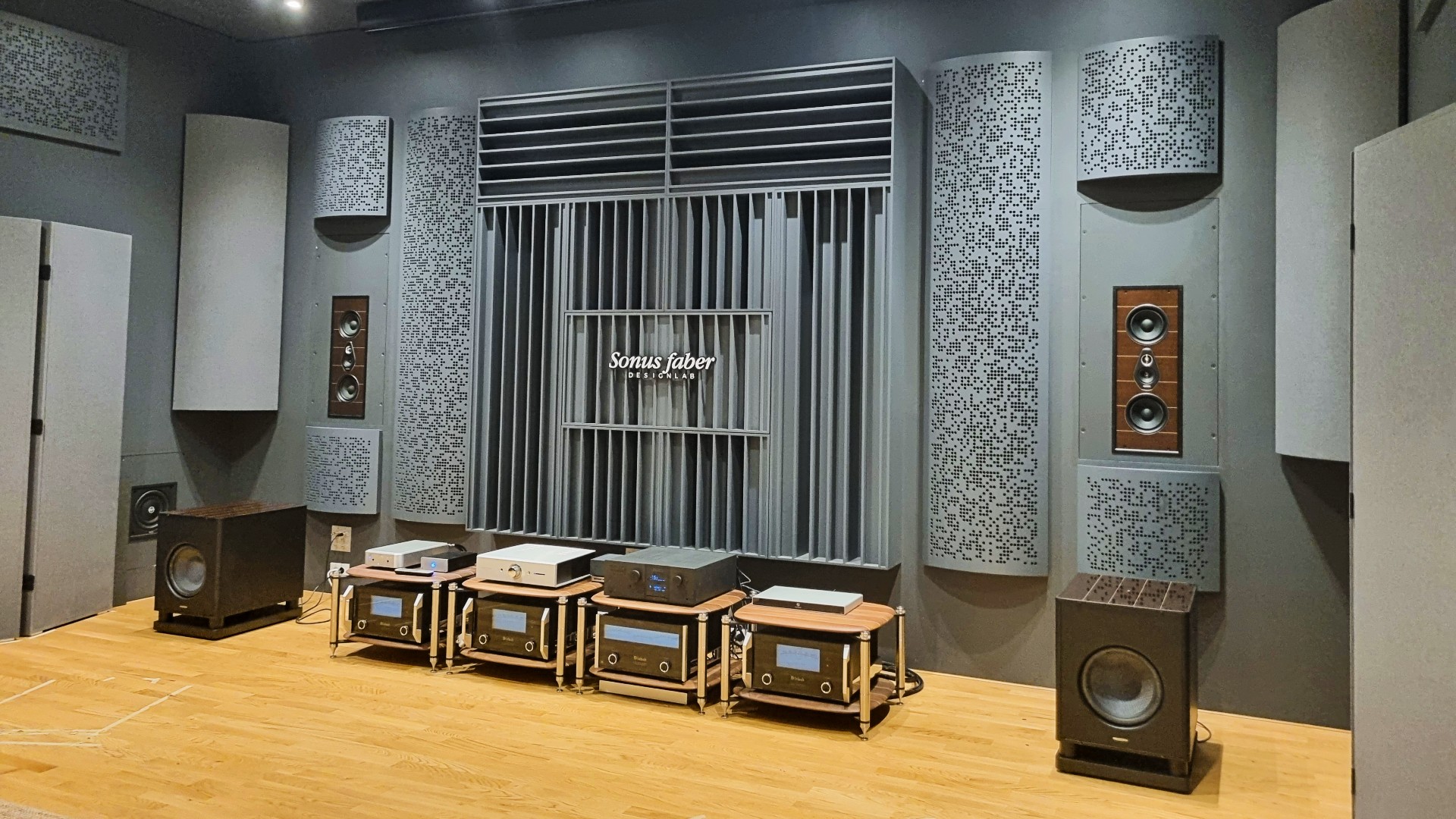
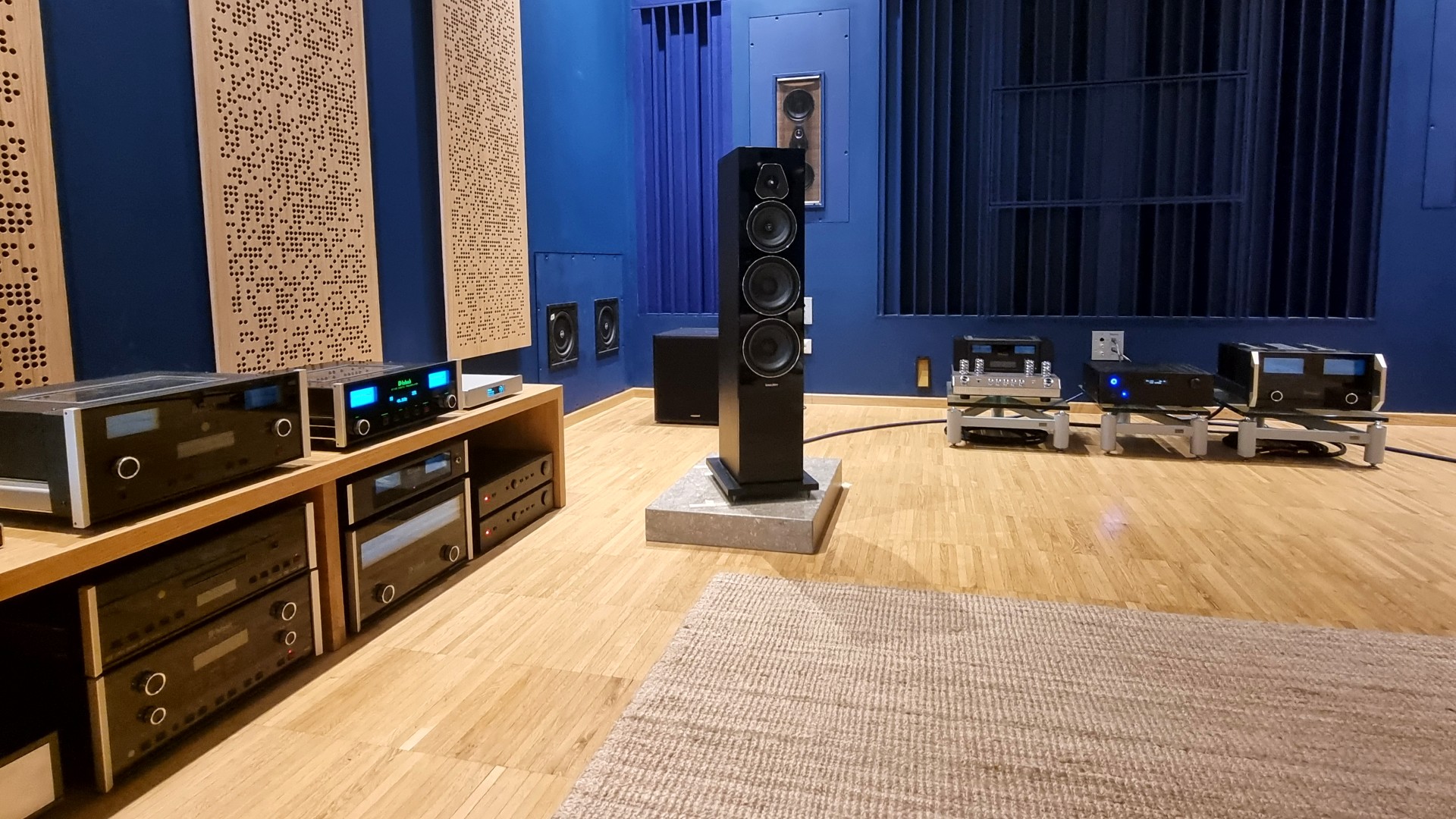
As you’d expect for a speaker six times the price, a switch to the Maxima Amator speakers with the McIntosh electronics reveals a different kind of beast entirely.
Understandably, there isn’t the same bass authority from solely their 18cm mid/bass driver, but instead we get a faster, more musical and naturally much more detailed performance – Paul Simon’s jingly-jangly Diamonds On The Soles Of Her Shoes sounds as sprightly as we’ve heard it – with frequency integration a key strength of the presentation.
It’s a fine example of the McIntosh Group’s two-channel repertoire; an ode to the company’s passion for music – and, like so many Sonus Faber speakers both new and old, it's packaged in one of the most handsome designs on the market.
MORE:
McIntosh and Sonus Faber presidents talk COVID-19 impact, brand DNA, and the return to automotive
We look back at the original 1991 Sonus Faber Extrema
Fine Sounds UK launches as high-end distributor for Sonus Faber and McIntosh
Becky is the managing editor of What Hi-Fi? and, since her recent move to Melbourne, also the editor of the brand's sister magazines Down Under – Australian Hi-Fi and Audio Esoterica. During her 11+ years in the hi-fi industry, she has reviewed all manner of audio gear, from budget amplifiers to high-end speakers, and particularly specialises in headphones and head-fi devices. In her spare time, Becky can often be found running, watching Liverpool FC and horror movies, and hunting for gluten-free cake.

